Explore the World of Jane Goodall: A Famous Female Scientist
Want to learn about my favorite female scientist of all time? Read on to explore the work of famous primatologist and animal rights activist, Dr. Jane Goodall, and her groundbreaking work with chimpanzees.
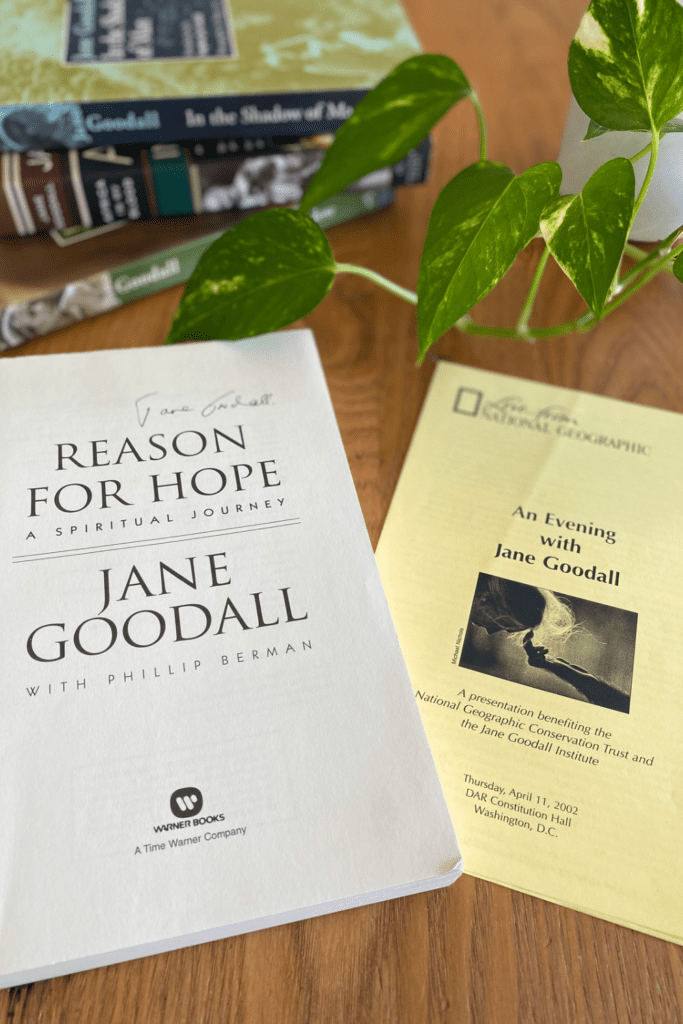
This post contains affiliate links. If you choose to make a purchase using the embedded links, I may make a small commission, at no additional cost to you. Thank you in advance for your support in making the educational material I create freely accessible.
I fell in love with Jane Goodall’s work when I was sixteen years old and my mother bought me a copy of the book “In the Shadow of Man”. I already had aspirations of becoming a conservation biologist and reading Dr. Goodall’s work added fuel to my growing internal fire. Shortly after graduating from college with a degree in biology, I heard Jane speak at DAR Constitution Hall in Washington, D.C., where she engaged her audience in detailed descriptions of her work with chimpanzees in Tanzania’s Gombe Stream National Park. After the event, she even signed my copy of her latest book at the time (and one of my all-time favorites) “Reason for Hope: A Spiritual Journey”.
Hearing an accomplished female scientist speak about her 60+ years of conservation work was transformational for me, as she served as a living example of what I could someday accomplish. Although I did not follow in Jane Goodall’s footsteps of becoming a renowned primatologist and anthropologist, her influence inspired me to investigate areas where science, sustainability, and education meet and how to effectively communicate those interconnections with a global audience.
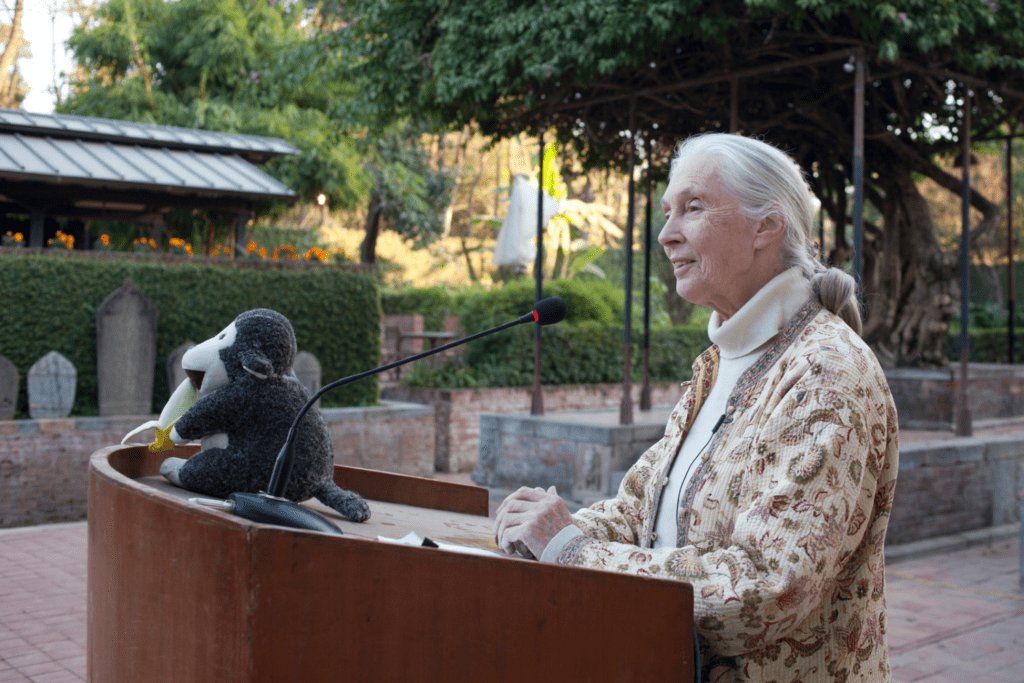
Who is Jane Goodall?
Jane Goodall is a world-renowned female primatologist, anthropologist, and animal rights activist. She is best known for her groundbreaking work with chimpanzees in Tanzania’s Gombe Stream National Park, where she has studied them for more than 60 years.
Goodall’s pioneering research on chimpanzee behavior challenged many long-held beliefs about the differences between humans and other animals. She discovered that chimpanzees have complex social and emotional lives, use tools to solve problems, and have a range of behaviors that were previously thought to be unique to humans.
In addition to her scientific work, Goodall is also an advocate for environmental conservation and animal welfare. She founded the Jane Goodall Institute, which works to protect chimpanzees and their habitats, and she has received numerous awards and honors for her contributions to science and conservation.
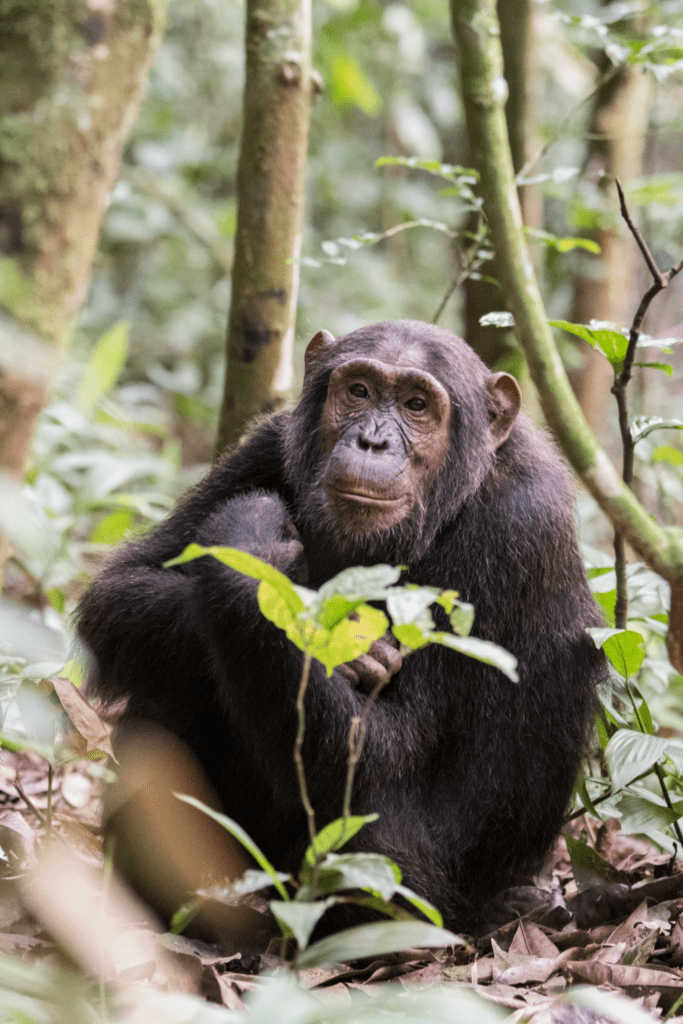
What is a Primatologist?
A primatologist is a scientist who studies primates, which are a group of mammals that includes monkeys, apes, lemurs, and other related species. Primatologists study many different aspects of primate behavior, including social organization, communication, cognition, and ecology.
Some primatologists conduct fieldwork in the natural habitats of primates to observe their behavior and interactions with their environment. They may study primate communities and their relationships with other animals and plants, as well as the impacts of human activities such as deforestation, hunting, and habitat destruction on primate populations.
Other primatologists work in laboratory settings to study primate behavior and cognition under controlled conditions. They may use tools such as brain imaging, behavioral experiments, and genetic analysis to understand the mechanisms underlying primate behavior and cognition.
Dr. Goodall studied chimpanzees in the field in the Tanzanian forests of Gombe Stream National Park. She was the first female scientist to conduct extensive research on chimpanzee behavior in the wild.
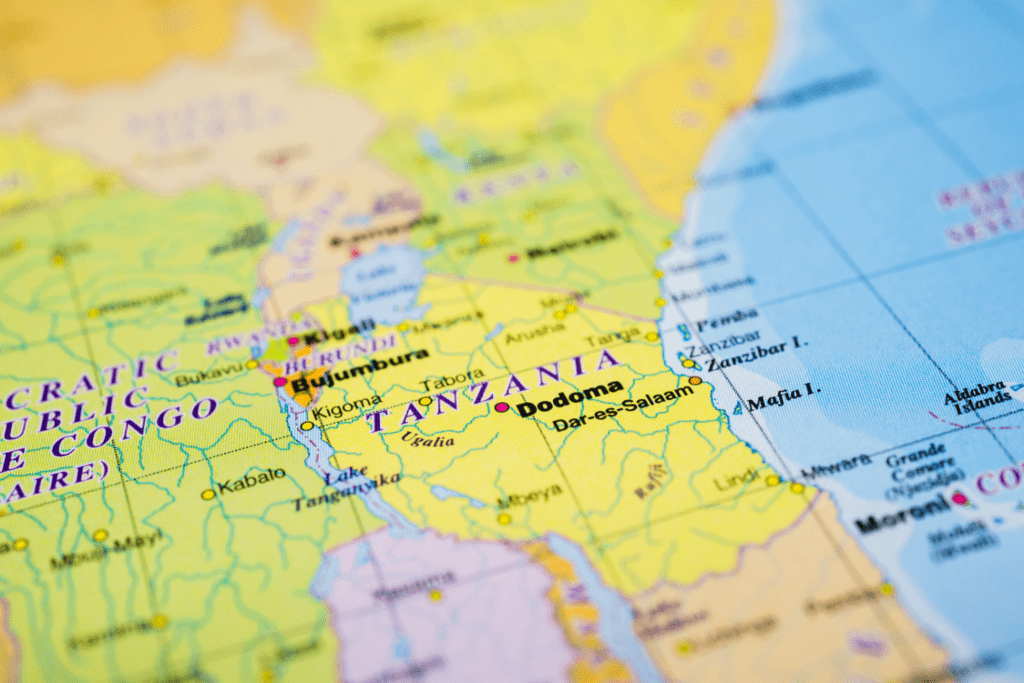
Interesting Facts About Jane Goodall’s Research
There are many interesting facts about Jane Goodall’s research on chimpanzees. Here are some examples:
- Goodall was the first person to document chimpanzees using tools in the wild, overturning the prevailing scientific belief that tool use was unique to humans.
- Goodall observed that chimpanzees have complex social relationships, including hierarchical dominance structures and lifelong bonds between family members.
- Goodall discovered that chimpanzees have distinct personalities and individual traits, such as being shy or outgoing, which influence their behavior and interactions with others.
- Goodall’s research showed that chimpanzees engage in violent behaviors, such as hunting and territorial aggression, that were previously thought to be rare in non-human animals.
- Goodall’s studies of chimpanzee communication revealed that they have a complex system of vocalizations and body language that allows them to convey a wide range of meanings and emotions.
- Goodall’s work has had a significant impact on conservation efforts for chimpanzees and their habitats, raising awareness of the threats they face from habitat destruction, poaching, and other human activities.
Overall, Jane Goodall’s research on chimpanzees has revolutionized our understanding of these fascinating animals and has had a profound impact on the fields of primatology and conservation biology.
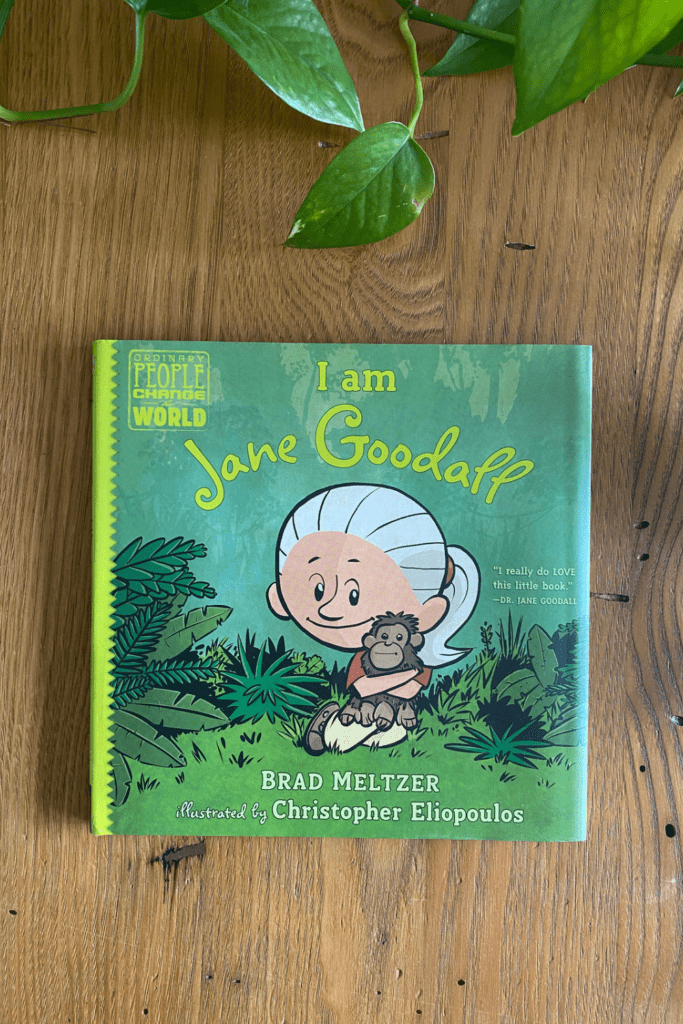
Children’s Picture Books About Dr. Jane Goodall
There are several children’s picture books about Jane Goodall and her work with chimpanzees. Here are some examples:
Me – Jane
“Me…Jane” by Patrick McDonnell is a book that tells the story of Jane Goodall as a young girl and her lifelong love of animals that led her to become a primatologist.
The Watcher: Jane Goodall’s Life with the Chimps
“The Watcher: Jane Goodall’s Life with the Chimps” by Jeanette Winter: This book chronicles Jane Goodall’s work with chimpanzees in Tanzania, highlighting her discoveries and the challenges she faced.
Little People, Big Dreams: Jane Goodall
“Little People, Big Dreams: Jane Goodall” by Isabel Sanchez Vegara: This book is part of a series that introduces children to inspiring women throughout history, including Jane Goodall and her work with chimpanzees.
The Story of Jane Goodall: A Biography Book for New Readers
“The Story of Jane Goodall: A Biography Book for New Readers” by Susan B. Katz is an illustrated biography book about the life and work of Jane Goodall. The book covers Goodall’s childhood in England, her love for animals, and her journey to becoming a primatologist.
I am Jane Goodall: Ordinary People Change the World
“I am Jane Goodall” is a children’s nonfiction book written by Brad Meltzer and illustrated by Christopher Eliopoulos. The book is part of a series called “Ordinary People Change the World” and focuses on the life of the renowned female scientist, Dr. Jane Goodall. Through engaging illustrations and vivid descriptions, the book highlights Goodall’s determination, courage, and love for animals.
These books can be a great way to introduce children to the fascinating world of primatology and the important work of female scientist Dr. Jane Goodall.
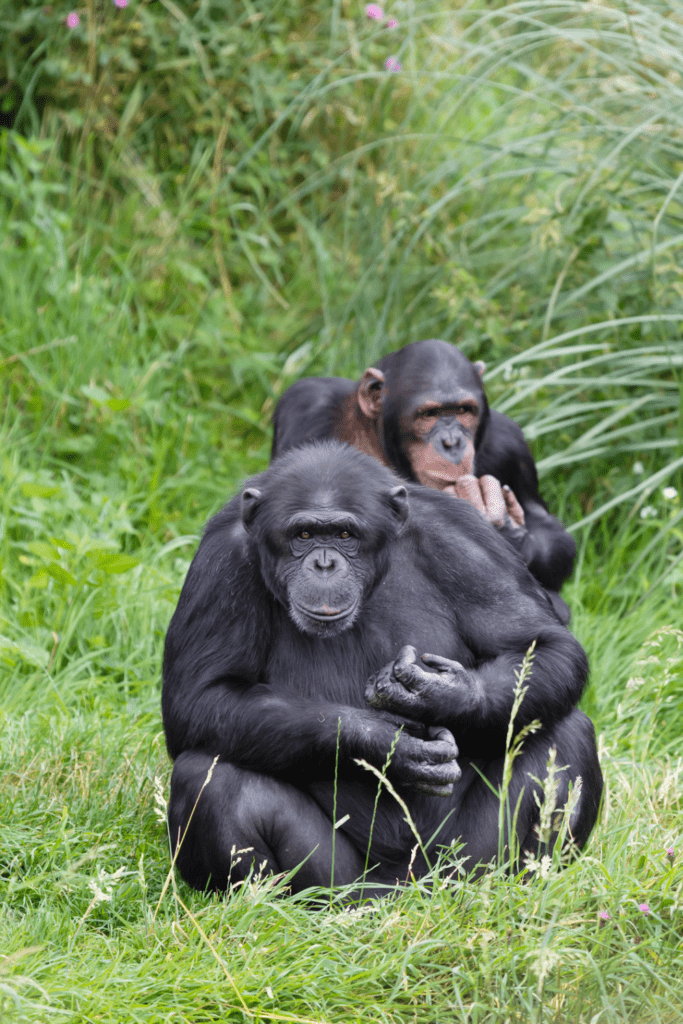
Dr. Jane Goodall’s Famous Quotes
Jane Goodall is known for her inspiring words and advocacy for animal rights and environmental conservation. She has been quoted more times than I can count; here are some of her most famous inspirational quotes:
“The greatest danger to our future is apathy.”
This quote emphasizes the importance of taking action to protect the planet and its inhabitants.
“Only when we understand can we care; only when we care will we help; only if we help will they be saved.”
Goodall believes that education and understanding are key to creating change and making a positive impact.
“Every individual matters. Every individual has a role to play. Every individual makes a difference.”
This quote highlights the power of individual action and encourages people to take responsibility for their impact on the world.
“Change happens by listening and then starting a dialogue with the people who are doing something you don’t believe is right.”
Goodall believes in the importance of respectful dialogue and collaboration to create positive change.
“We have a choice to use the gift of our lives to make the world a better place.”
This quote is a reminder that we all have the power to make a difference, and that it is our responsibility to use our time and resources to contribute to the greater good.
These quotes reflect Goodall’s deep compassion for animals and her commitment to creating a more just and sustainable world.
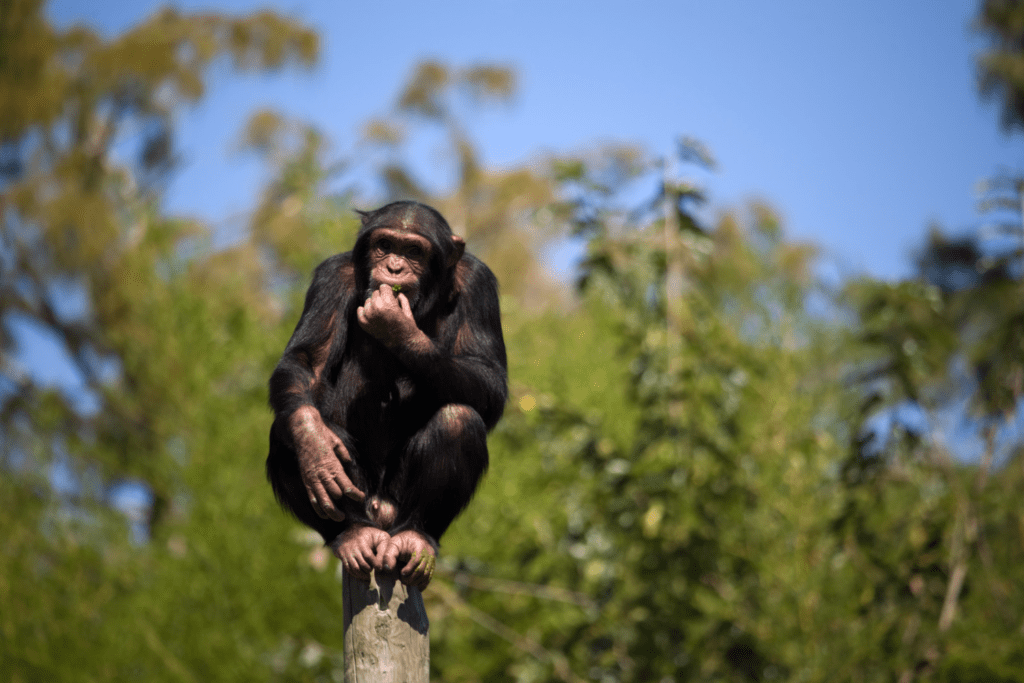
Jane Goodall’s Biggest Discovery
Jane Goodall is known for many groundbreaking discoveries in the field of primatology, but her most significant contribution may be her observations of chimpanzee tool use. Before her research, it was believed that tool use was a uniquely human trait. However, in the early 1960s, Goodall discovered that chimpanzees in Tanzania’s Gombe Stream National Park were using tools in the wild. She observed that they would use sticks to probe for termites in termite mounds, and use leaves as sponges to soak up water.
This discovery challenged the prevailing scientific belief that humans were the only species capable of using tools and helped to broaden our understanding of animal intelligence and behavior. Goodall’s work on chimpanzee tool use paved the way for further research into the cognitive abilities of non-human primates and other animals. It also demonstrated the importance of long-term, careful observation in scientific inquiry, and the value of questioning assumptions and challenging conventional wisdom.
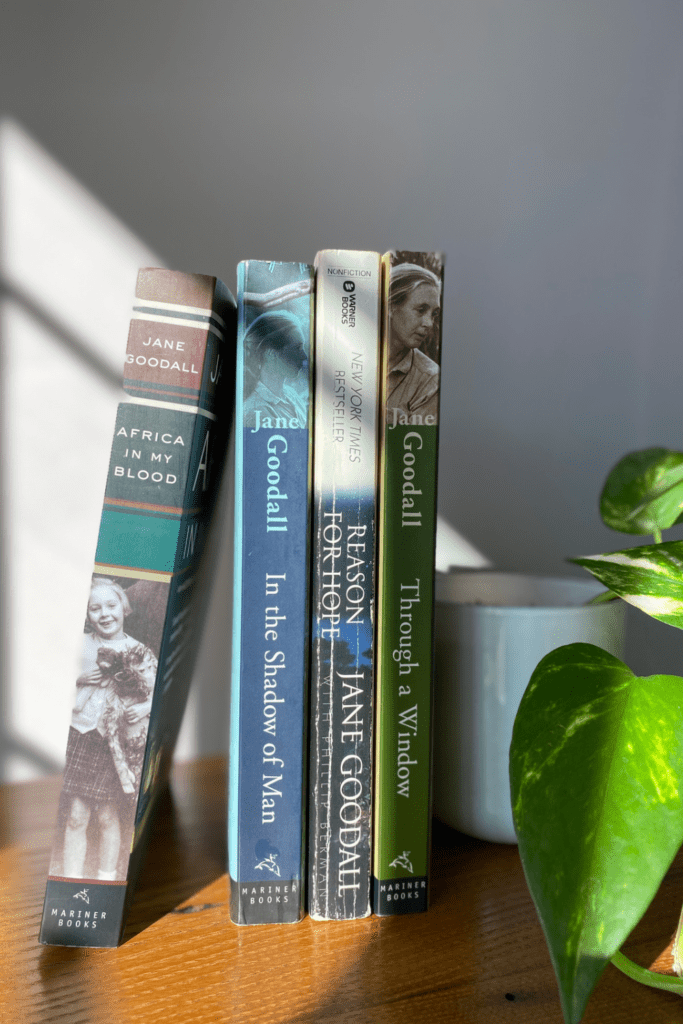
Books Written By Dr. Jane Goodall
Jane Goodall has authored many books throughout her career as a primatologist, animal rights activist, and environmental conservationist. Here are some titles of my favorite books:
- “In the Shadow of Man“: This book, published in 1971, is a memoir of Goodall’s early years studying chimpanzees in Gombe Stream National Park.
- “The Chimpanzees of Gombe: Patterns of Behavior“: This book, published in 1986, is a scientific study of chimpanzee behavior based on Goodall’s years of fieldwork in Tanzania.
- “Through a Window: My Thirty Years with the Chimpanzees of Gombe”: Published in 1990, this book is a reflection on Dr. Jane Goodall’s work in the area of animal behavior.
- “Reason for Hope: A Spiritual Journey“: This book, published in 1999, is a memoir of Goodall’s life and work, and her reflections on the relationship between humans and the natural world.
- “Africa in My Blood”. This book, published in 2000 is an autobiography in letters from Jane’s early years of work in Tanzania’s Gombe Stream National Park.
- “Harvest for Hope”. Published in 2006, this insightful book provides an introspection into human eating habits and how we can positively impact the planet with our food choices.
- “Hope for Animals and Their World: How Endangered Species Are Being Rescued from the Brink“: This book, published in 2009, is a collection of stories about successful conservation efforts for endangered species, as well as Goodall’s thoughts on the importance of conservation.
- “Seeds of Hope: Wisdom and Wonder from the World of Plants“: This book, published in 2013, explores the world of plants and their importance for the health of the planet, as well as Goodall’s personal experiences with gardening and plant conservation.
These books offer insights into Goodall’s life, work, and philosophy, and provide a valuable perspective on the study of primates, animal behavior, and conservation biology. They also explain how people, like you and I, have the power to create positive change through our actions and our continued efforts to educate ourselves and others on environmental issues.
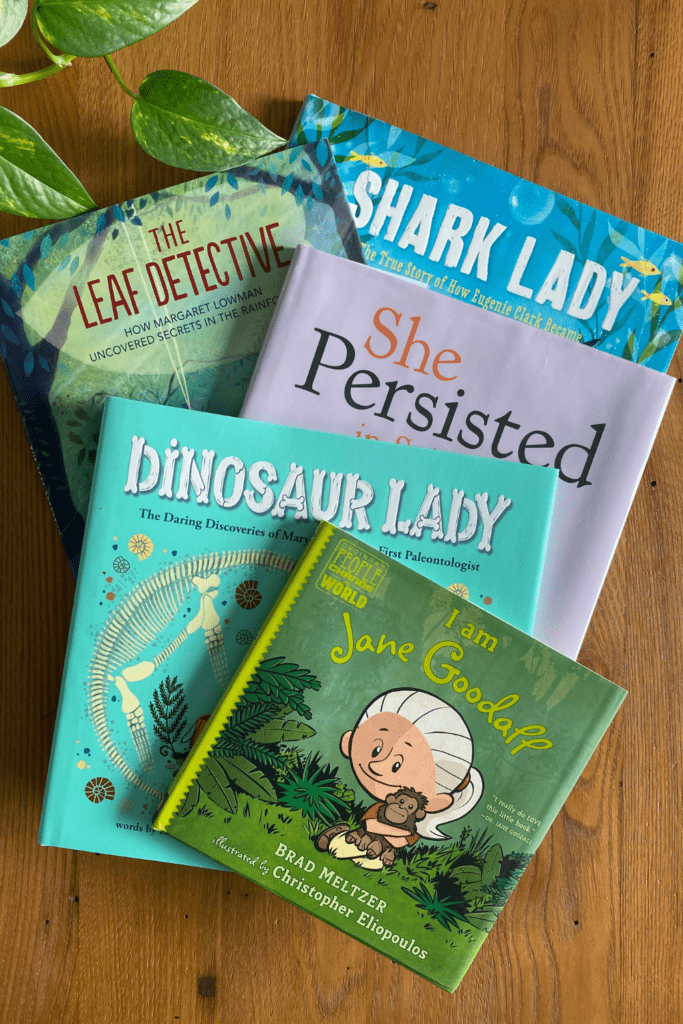
Learning About Other Famous Female Scientists
If you’d like to continue learning about more amazing women in science and their contributions to various fields, check out this post on famous female scientists, which includes numerous children’s picture book recommendations, along with free coloring pages.
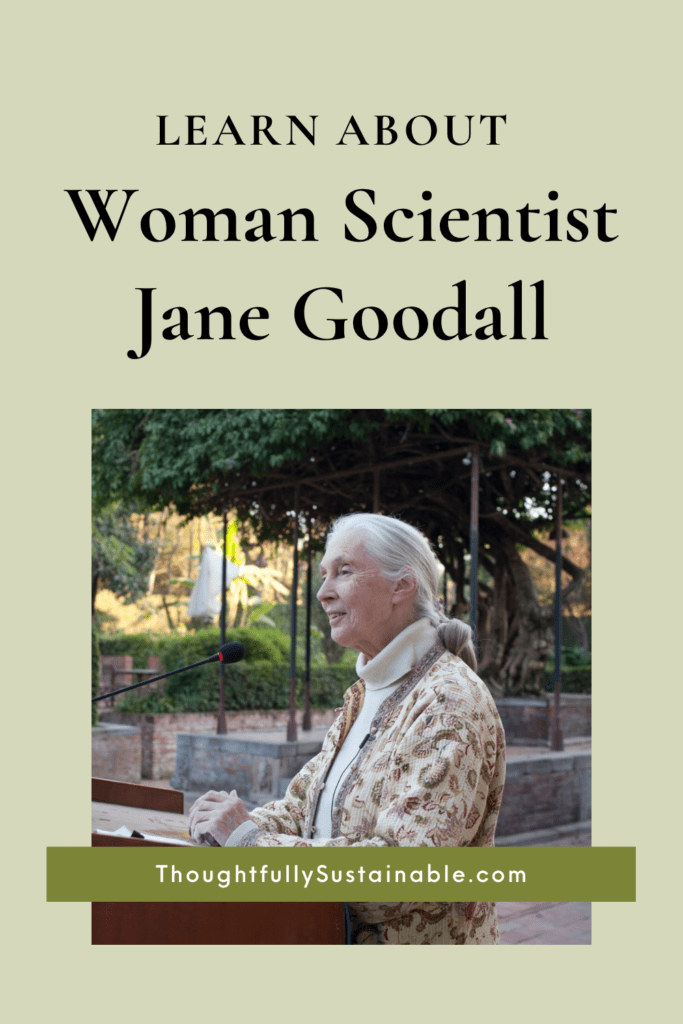
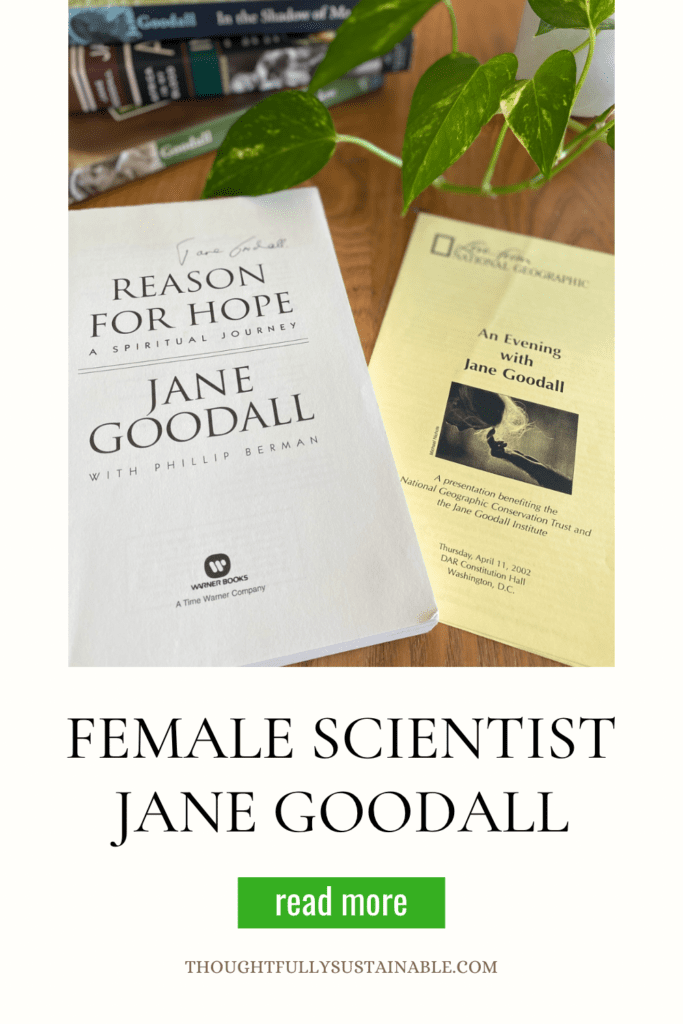

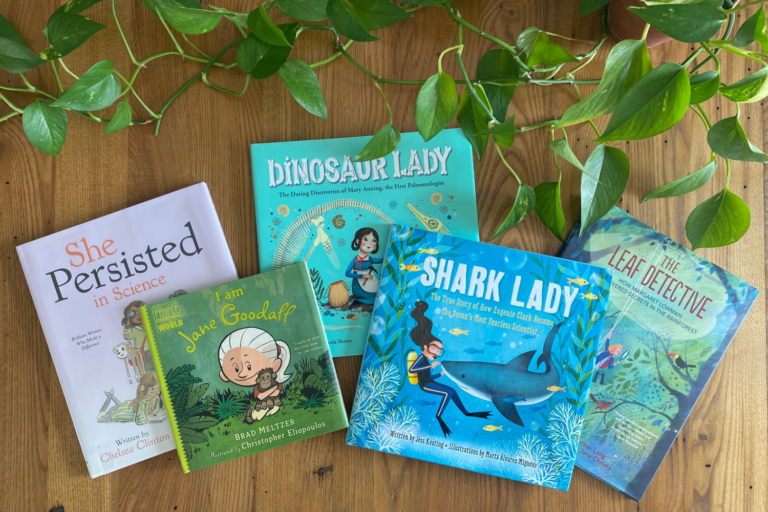
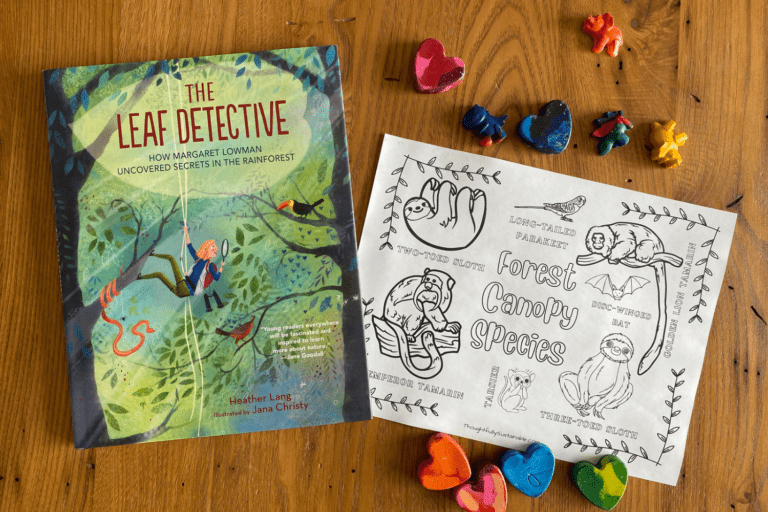
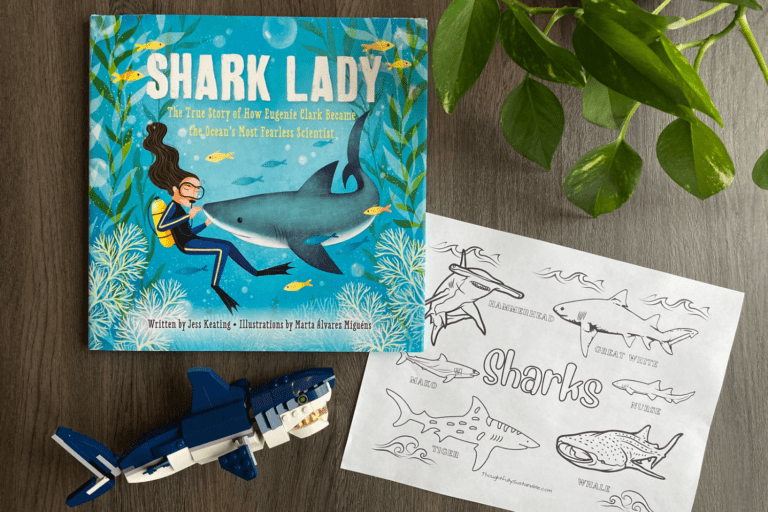
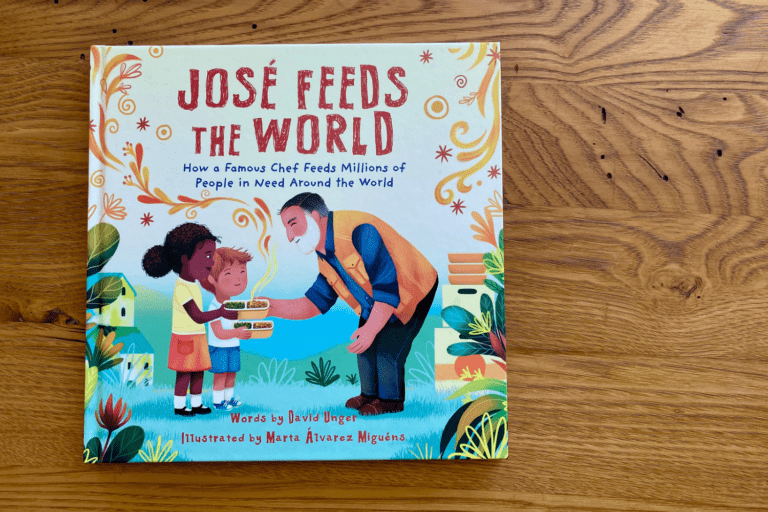
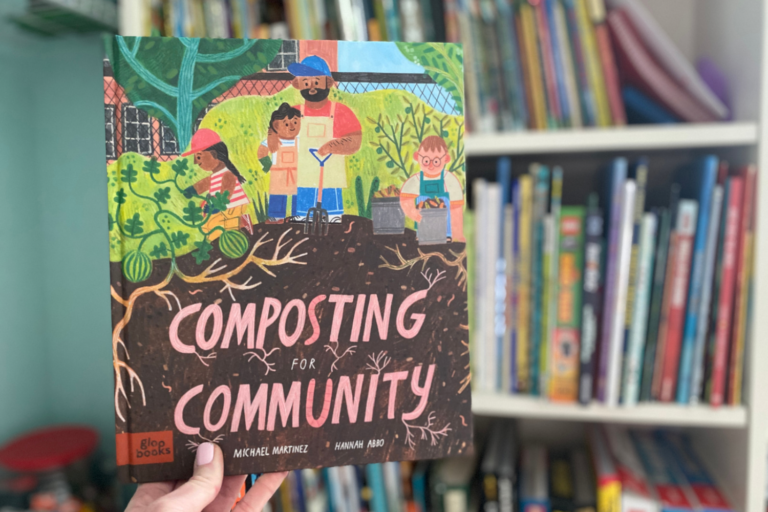
One Comment
Comments are closed.